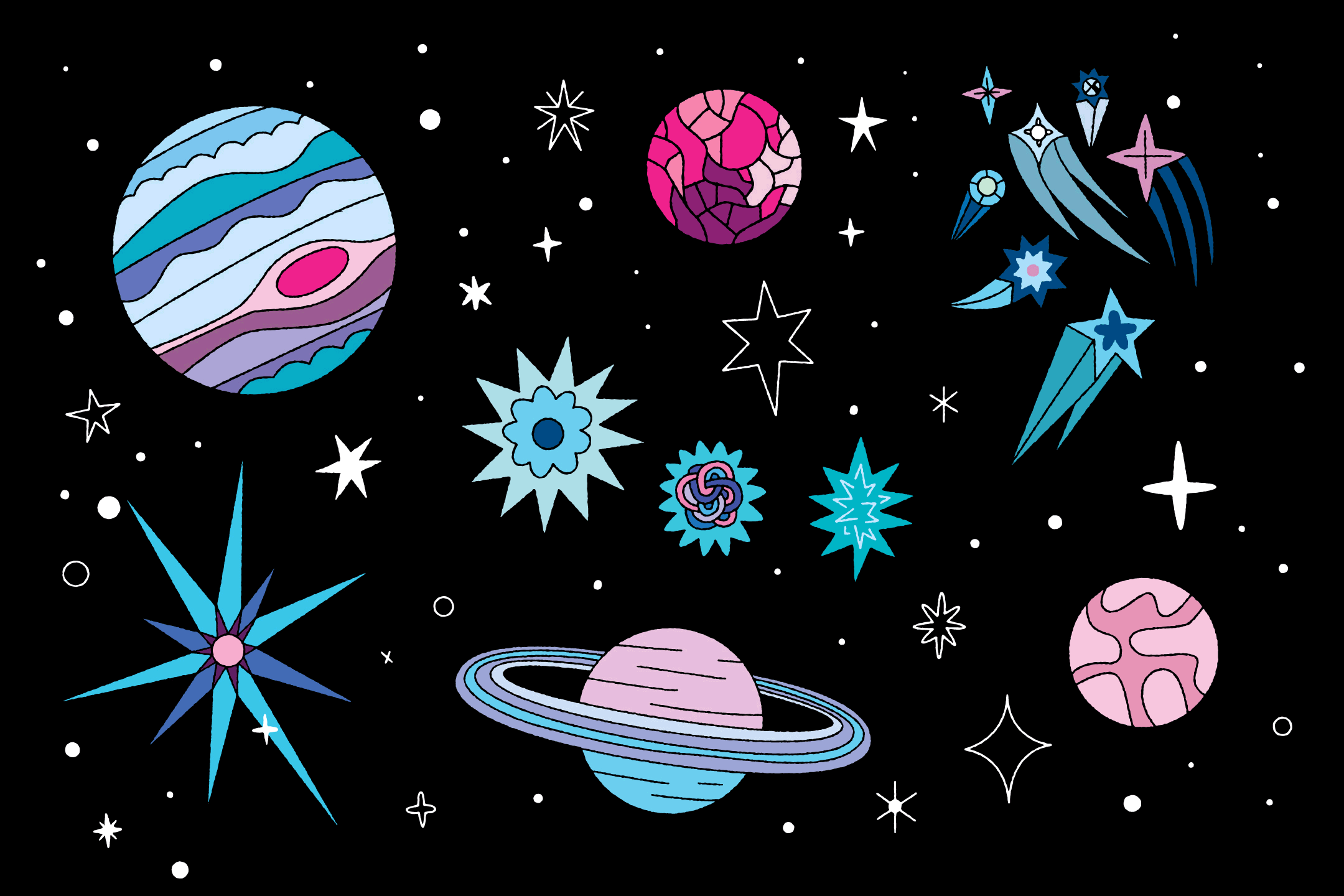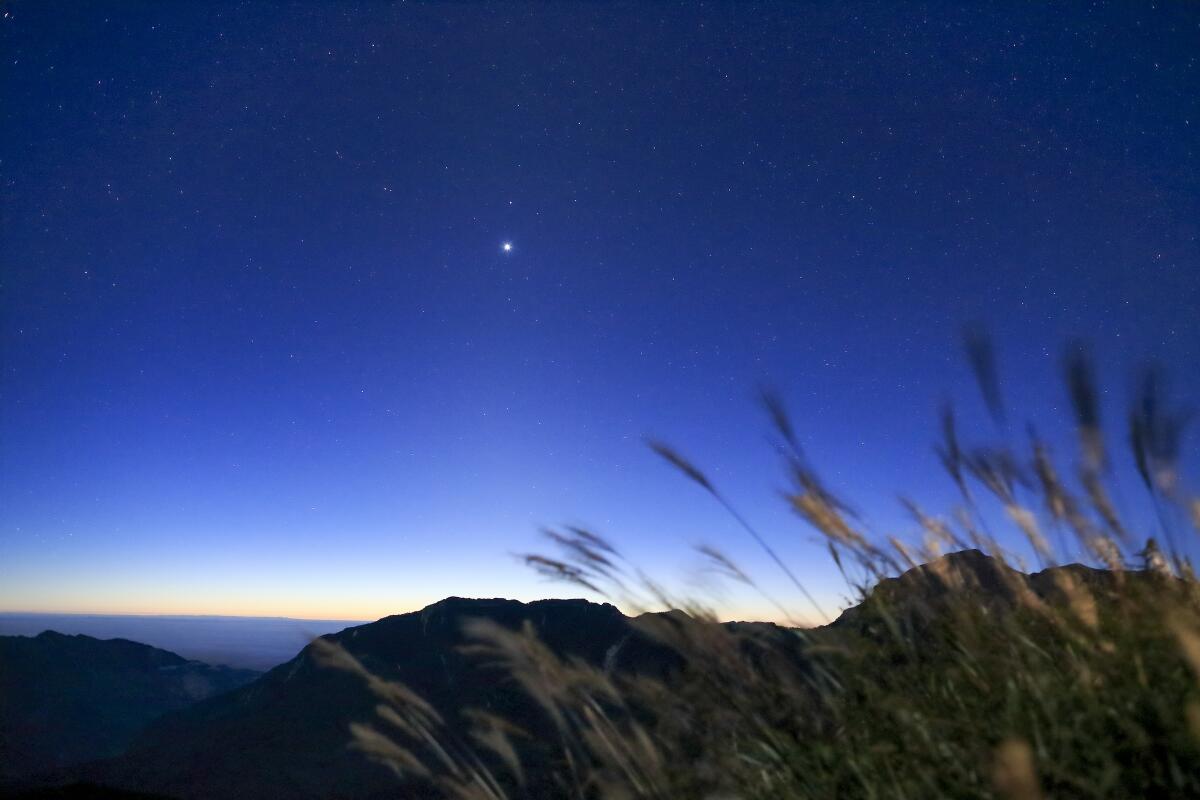Sign up for The Wild
We’ll help you find the best places to hike, bike and run, as well as the perfect silent spots for meditation and yoga.
You may occasionally receive promotional content from the Los Angeles Times.

This might be a good time to look up.
So said writer and physicist André Bormanis. He may be biased, because he has been telling true and fictional stories set in space for more than 25 years. Many of us now have more time, and if you can safely step outside, you can spy the skies and navigate the universe.
“In your imagination, you can travel to different worlds simply by looking up at night,” he said.
Bormanis, who has a master’s degree in science, technology and public policy from George Washington University, served as a science consultant for the “Star Trek” television and film franchise in the 1990s, then went on to write for “Star Trek: Voyager,” “Star Trek: Enterprise” and other series.
He wrote the narration for “Centered in the Universe,” the Griffith Observatory’s long-running planetarium show, and serves as co-executive producer and writer for the Fox/Hulu series “The Orville” and consulting producer for National Geographic’s “Cosmos.”
The sky above is filled with wonders; you have only to leave your house and look up to see stars, planets, the moon and so much more. Here’s how to get started.
We asked Bormanis for a beginner’s introduction to the sky —a handful of celestial highlights you can see without a telescope. He gave us seven. All should be visible to the naked eye on a cloudless night, especially if there’s not too much light pollution in your neighborhood. (For his bonus suggestion, No. 7, you might need binoculars.)
“When one looks toward the southwest just after dark, Venus is the most prominent object in the night sky after the moon,” he said. “Venus is currently about 60 million miles away from the Earth. Which means it took the light from Venus about six minutes to hit your eye. You’re seeing Venus six minutes in the past.”
The Pleiades, also in the southwest sky, lie within the constellation of Taurus the Bull. Just after dusk, look a bit below and to the right of the waxing crescent moon (the night of April 25). “That’s an open star cluster 440 light-years away.” Because a light-year is 6 trillion miles, “the light that you’re seeing left that star cluster 440 years ago, which, if I’m correct, is 1580 — 30 years before Galileo first turned a telescope toward the night sky.”

“This is a great time of year to look for Orion. Orion is very prominent low in the southwest. It is facing Taurus the Bull. Orion is trying to slay Taurus the Bull, in fact. … And Orion’s hunting dogs, Canis Major and Canis Minor, are to his left.”
It doesn’t take a lot of fancy equipment. A modern camera with a longer lens can help you capture the heavens.

“The brightest star in Canis Major is Sirius, the dog star, and it’s the brightest star in the sky.” To find it, look low in the southwest sky, to the left of Orion. (Venus and Jupiter are brighter, but they’re planets, not stars.)
Betelgeuse marks Orion’s right arm and “has been behaving strangely in recent months. It’s been dimming. It is a red supergiant star, destined to end its life in a supernova explosion. We don’t know when. It will be sometime in the next few hundred thousand years, most probably.”
Whether truth or fiction, these tales of space treat science seriously
“If you go out under the predawn sky, Saturn, Mars and Jupiter are doing a little dance in the southeast.” And if you watch them from morning to morning, “you can watch their relative positions changing. We’re all orbiting the sun in the same direction. Mars is the next planet out from Earth, then Jupiter, then Saturn. So it takes Earth one year to go around the sun. It takes Mars a little over two years. It takes Jupiter 12 years. And Saturn, 30 years.”
If you have binoculars, “look beneath the belt of Orion at his sword sheath. One of the ‘stars’ in that sheath will look a little fuzzy. That’s the Orion Nebula, a huge complex of gas and dust where stars are being born. It’s a stellar nursery about 1,500 light-years from Earth.”
What you need to get started in exploring the night sky. Even basic binoculars will do
Sign up for The Wild
We’ll help you find the best places to hike, bike and run, as well as the perfect silent spots for meditation and yoga.
You may occasionally receive promotional content from the Los Angeles Times.